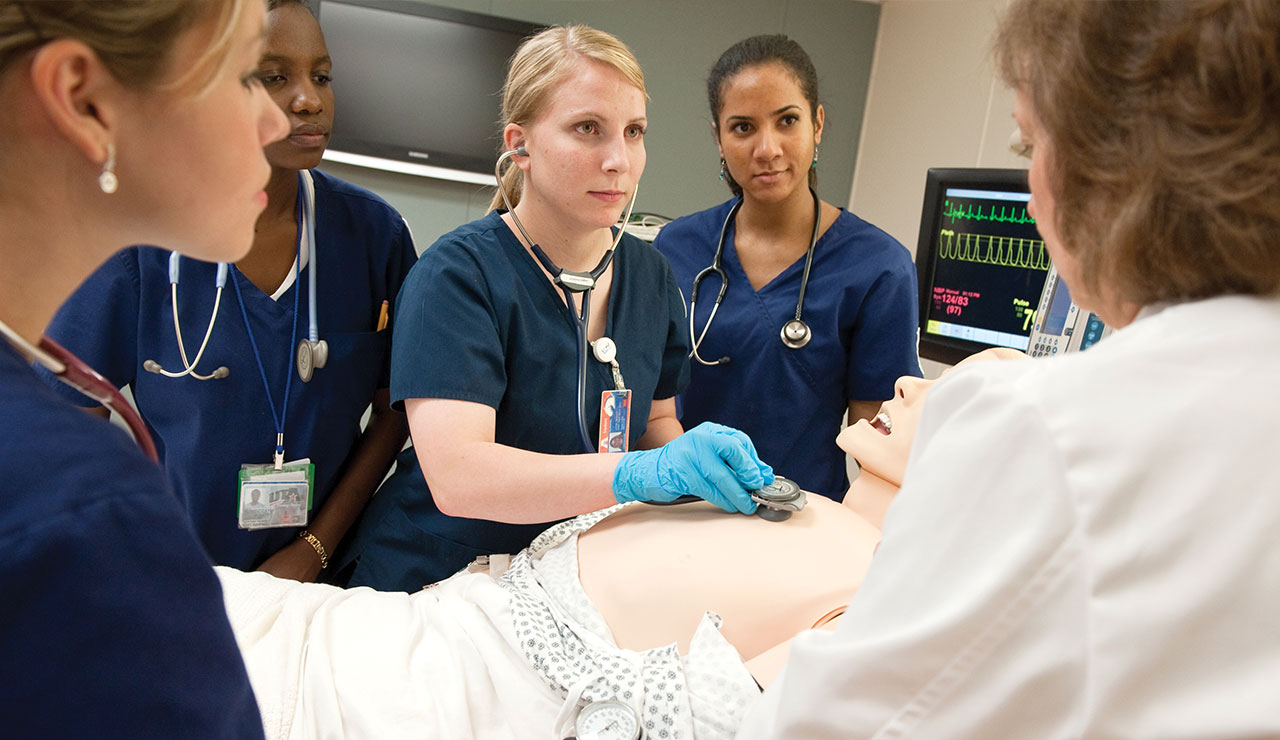
Faculty Rounds
Nursing students receive instruction in the College’s Smart Hospital.
College becoming a faculty magnet
Many nursing programs around the country struggle to fill faculty vacancies. Indeed, the American Association of Colleges of Nursing estimates there is a 6.9 percent faculty vacancy rate. This faculty shortage makes it harder to produce a sufficient number of registered nurses to meet the nation's rising demand.
The College of Nursing and Health Innovation is bucking the trend. Nearly 30 full- and part-time faculty members joined the College at the beginning of the 2016-17 academic year. At the same time, the number of new full-time faculty has risen while that of part-time or adjunct faculty has dipped. In fall 2016, the College had 95 full-time, on-campus faculty members, up from 92 during the 2015-16 academic year and 87 in 2014-15. Meanwhile, the number of part-time, on-campus instructors has fallen over the last two years, with 45 in 2014-15, 43 in 2015-16, and 41 in fall 2016.
"We have an excellent reputation in the community, and many individuals interested in faculty positions seek us out," says Beth Mancini, senior associate dean and head of undergraduate programs. "When we have a specific need, we typically use word-of-mouth combined with targeted national recruiting."
Dean Anne Bavier says the College has also been strategic about grooming graduate students for the possibility of careers in academia. The College offers two doctorate nursing degrees. The Ph.D. is geared toward a career in academia. And while the DNP is more industry-oriented, many students still end up teaching.
"When I was hired, I saw terrific national certification rates," Dr. Bavier says. "I saw a budget that was adequate to do the work and had some flexibility in it. I saw leaders who, if challenged with a conceptual model or out-of-the-box thinking in any arena, sat back, thought about it, and went there."
